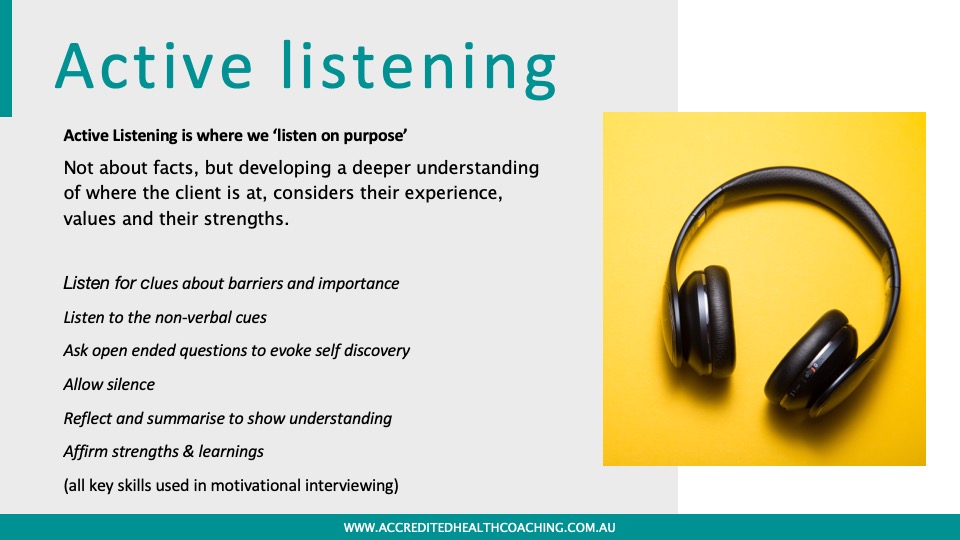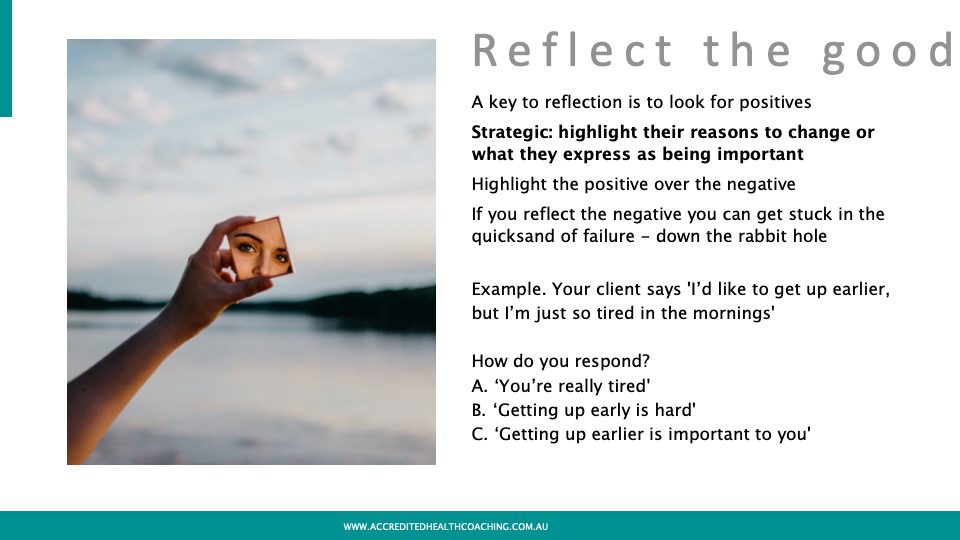Communicating for behaviour change. Presented by Sharon Curtain, Dietitian & Health Coach
Behaviour change is one of the great challenges for health care professionals. How is it that some people can appear to effortlessly change years of habits where others find it painful to even think about change?
Most of our clients are looking for guidance with behaviour change, if they weren’t, they possibly wouldn’t need to be seeing us.
In Sharon’s presentation she describes five communication skills which can empower our clients and increase their confidence in being able to change.
- The skill of active listening- The best way to understand people is to listen to them. We think we’re understanding our clients by asking questions but often this is just getting the information we think we need. Active listening involves using effective questioning, reflections, summaries, and giving them space to speak by being silent. Paying attention to the verbal and nonverbal cues of both you and your client.
- Using open questions that evoke insight for change. Asking the RIGHT questions gets your client thinking about what they want, what’s important to them and what makes change worthwhile. Effective questions can help them connect the dots between their actions and getting what they want. The use of open questions evokes motivation
- Reflecting the client’s words, thoughts and feelings. Reflections allow a shared understanding without needing to ask a question, and they show your client that you are truly hearing what they say. Reflecting what your client says can help your client to reflect upon what they have said, clarify any misrepresentations and continue the conversation forward, often diving deeper into a subject.
- How summaries can highlight motivation for change. A summary is when key reflections are grouped together and can help the client organise their thoughts and feelings. A summary can point out discrepancies between the clients current situation and future goals.
- The use of affirming language. It is essential to know the difference between affirming and giving praise. Although we want to encourage the client, we need to ensure that the affirmation is about the client, not us.


Sharon Curtain is a dietitian and health coach with twenty years’ experience in clinical and corporate nutrition. She is the creator and author of the nationally accredited Victoria University Diploma of Health Coaching.
To register for the presentation and associated documents including the assessment quiz click here